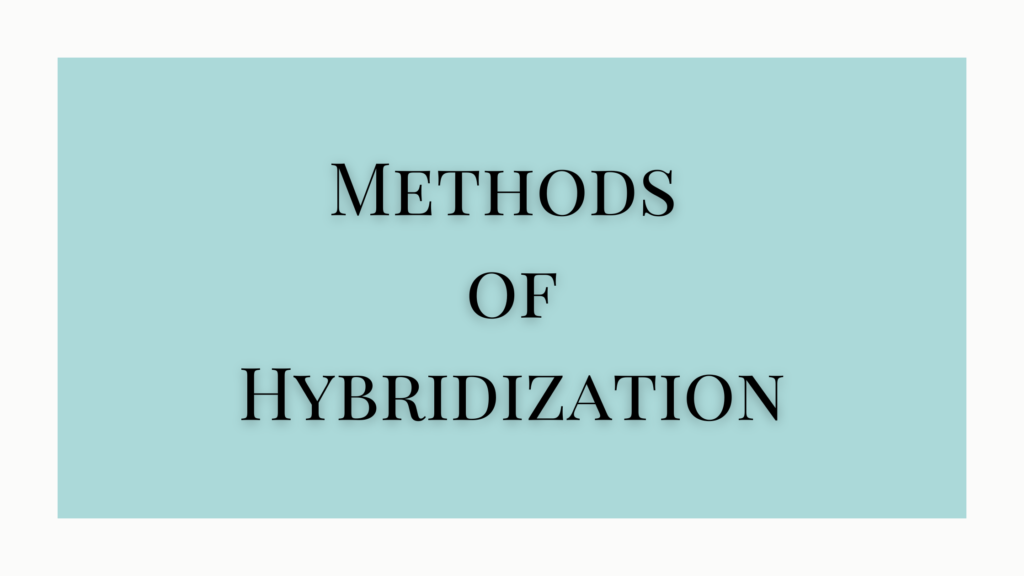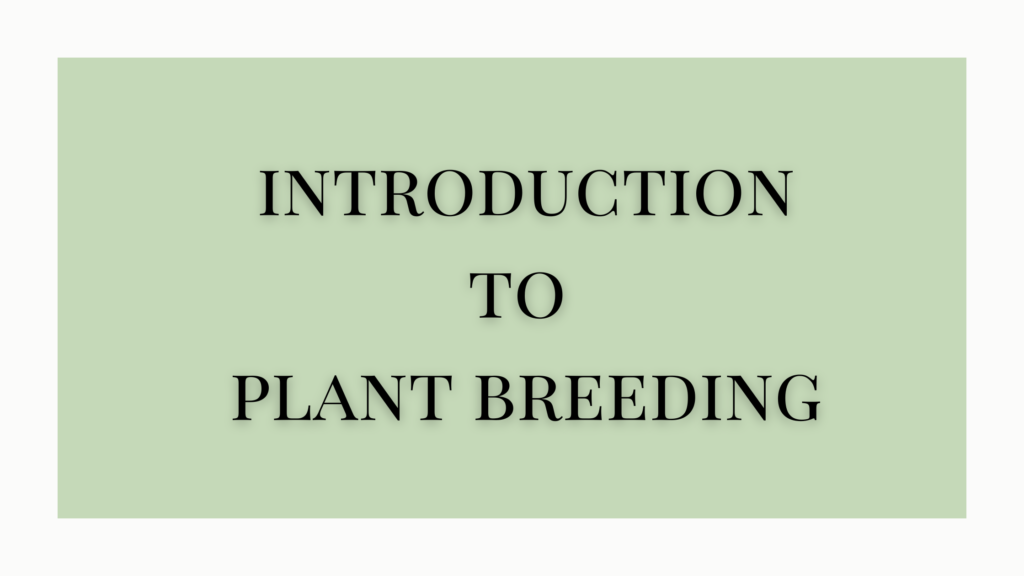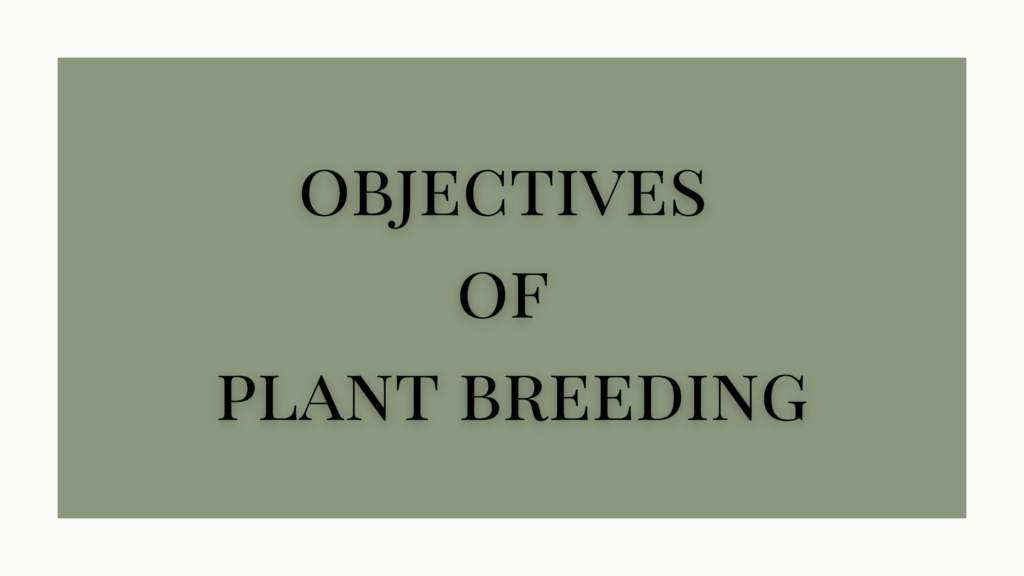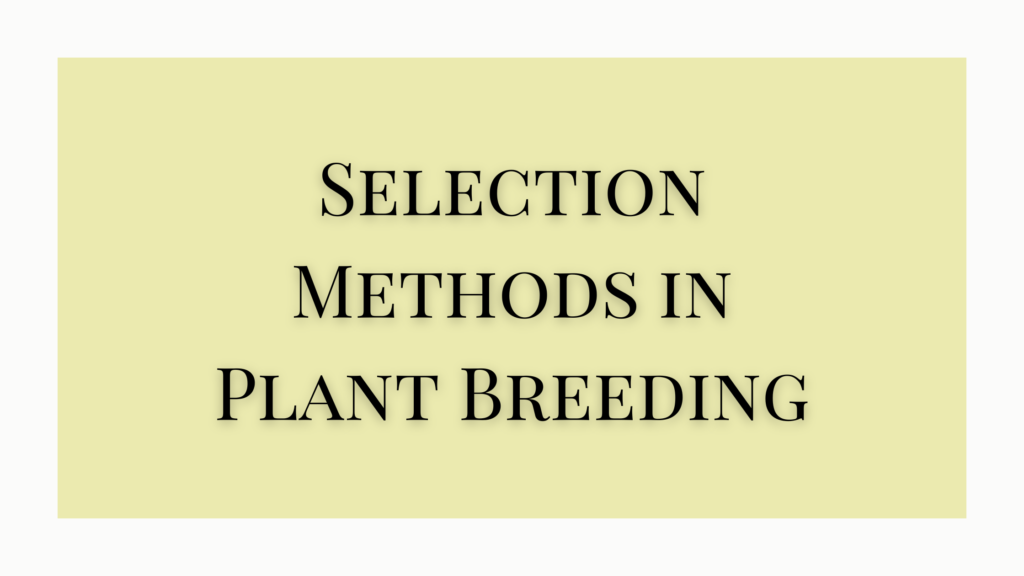What is Hybridization in Plant Breeding?
Hybridization refers to the cross between two plants or lines having different genotypes. In other words, hybridization is defined as the method of producing new crop varieties by crossing two genetically different plants. According to the chosen species and their nature, there are different types of hybridization in plant breeding.
This process helps in the production of new genetic variability. This is easily and most commonly achieved by crossing two different parents.
History of Hybridization
The natural variability in self-pollinated populations is left quickly when the population is subject to selection methods for further improvements. Thus, it is important to create new genetic variability. When compared to selection, hybridization is more recent in origin. There is evidence that Babilonians and Aserians had hand-pollinated date palms, as early as 700 BC for the metaxeric effects of pollen (metaxinianal tissues of fruits).
Sex in plants was discovered by Comararius in 1694. In 1717 Thomas Fairchild produced the first artificial hybrid, the Fairchild’s mule, by crossing sweet William with carnation. Joseph Koclrutor made many crosses in tobacco during 1760-1766 and emphasized hybrid vigor.
Thomas Andrew Knight developed several variations of apples, peaches, grapes, etc, from 1759 to 1835. But it was left to Mendel to propose the clear-cut laws of inheritance. These laws and subsequent discoveries in genetics have given hybridization a scientific basis. With the help of genetic principles, he was able to predict what he may expect from a given cross.
Hybridization started being widely used for crop improvement by the end of the 19th century. And has now become the most common method of crop improvement. A vast majority of crop varieties have resulted from hybridization.
Objectives of Hybridization
- Evolve a variety having all the desirable characteristics such as high yielding capacity, good quality, resistance to diseases and drought, adaptability to particular places, etc.
- Produce useful variations by introducing recombinations of characters.
- Produce and utilize hybrid vigor.
Types of Hybridization in Plant Breeding
According to the nature and relationship of plants to be crossed, the hybridization process is divided into the following types.
- Intravarietal hybridization: In this type, the parents chosen for the cross belong to the same species. They may be two strains, varieties, or races of the same species. Such hybridization is known as intervarietal hybridization. Many new varieties of cultivated crops have been evolved by this method. Eg. Leafhopper resistant varieties of rice.
- Intervarietal hybridization: In this type, plants to be crossed have different genotypes but belong to the same variety. This is also known as distant hybridization. Distant hybridization can be of two types.
- Inter-specific or intra-generic hybridization: Crosses made between two different species of the same genus are called inter-specific or intra-generic hybridization. It has been successfully tried in wheat, cotton, tobacco, mustards, etc.
- Intergeneric hybridization: Plants belonging to two different genera are crossed here. Raflano brassica, sugarcane, Sorghum, wheat, triticale wheat, oats, etc are the results of intergeneric crosses.
Steps of Hybridization in Plant Breeding
The various steps of hybridization in plants are followed meticulously to attain successful hybrids. The process starts with the selection of parents for the cross.
The essential details to note before making crosses of plants are the details of both male and female plants, whether the plant is unisexual or bisexual, the time of anthesis and harvesting, and whether the flowers are self-pollinated or cross-pollinated.
After determining these details, a suitable plant of desired characters is chosen. After that specific steps are followed for the hybridization program.
- Selection of parents
- Evaluation of parents
- Emasculation
- Bagging
- Collection and storage of pollen grains
- Crossing
- Labeling
- Collection of seeds
- Selection and naming of a variety
Selection of parents
Desirable female and male parents are selected from the available materials keeping in mind all the important characters to be combined. Some desirable characteristics include increased yield, adaptability to the growing conditions, etc.
Evaluation of parents
The parents are grown in isolated places and are self-pollinated repeatedly to bring homozygosity in desired traits. Both parents should mature at the same time. Evaluation is necessary for parent plants whose characteristics are not well-known. This process helps the breeders to understand any susceptibility of the plant.
Emasculation
Removal of stamens or anthers or killing the pollen grain of a flower without affecting the female reproductive organs is called emasculation. It is done to prevent self-fertilization and is usually performed before the opening of flower buds.
- Large flower buds are opened using forceps and fine needles and then removing anthers. The instruments are sterilized by dipping them in a rectified spirit, before using. The emasculation should be done without crushing or causing injury to other floral parts such as sepals, petals, and pistils.
- Emasculation is difficult in smaller or crowded flowers with dense inflorescence such as bajra, rice, wheat, etc. It requires special techniques and skills. The process is done by dipping the whole inflorescence in hot water for a definite period. Then it is immersed in cold water or alcohol for a definite period.
Breeders perform hand emasculation, suction method to take the pollens out, or hot water method, for certain types of flowers. The flower spikes are immersed in hot water for a specific period. This will kill the pollen. the duration of hot water treatment is different for each flower.
In some cases, emasculation is done by eliminating sterile male plants having sterile anthers. Male sterility can be induced artificially by spraying 2,4 naphthalene, acetic acid, maleic hydrazide, and tri iodo-benzoic acid on the immature flower buds.
Bagging
After emasculation, flower buds are kept enclosed in bags made of thin butter paper, muslin cloth, plastic or polythene paper, etc. The bags are tied using threads, wire, pins, etc. This process is called bagging. Both male and female flowers are bagged separately to prevent contamination of male flowers by pollen from undesired varieties and to prevent cross-pollination of emasculated female flowers with undesired foreign pollen.
Collection and storage of pollen grains
Pollen grains for crossing are carefully collected from the chosen male flowers. Pollen or anthers are collected in Petri dishes or paper bags right after dehiscence.
Crossing
After removing the bags of emasculated flowers, the pollen collected from the male parent is dusted on the stigma of the pistils. After crossing the female flowers are bagged again.
Labeling
The emasculated and crossed flowers are tagged and labeled properly. The labels are tagged to bags to bear all the details like reference number, date of emasculation, date of crossing, details of male and female parents, etc.
Collection of seeds
After maturity, seeds from the crossed heads are collected separately and labeled. In the next season, the seeds of each head are sown separately to raise F1. The F1 generation may show hybrid vigor, ie, increased growth, size, yield, or function over the parents.
Selection and naming of a variety
Finally, the desired variety is selected followed by its testing and naming before releasing it.
Methods of Hybridization In Self-Pollinated Crops
The selection methods of hybrids will be different for self-pollinated and cross-pollinated varieties. Many crop plants such as wheat, Barley, oats, rice, cotton, tobacco, potato, peas, beans, etc, are self-pollinated. The methods of selection for self-pollinated hybrids are given below.
Pedigree Method
In this method, the desired hybrids of the F1 population are selected based on desired characteristics. The seeds from each selected plant are collected and grown separately in rows and F2 is raised.
Again in F2, the best performers are selected and the products from these plants are sown to raise F3. This process is repeated up to F6 until it becomes homozygous and fairly uniform.
The undesirable varieties are discarded during the selection process. Here a complete ancestral report of each progeny is maintained. Finally, the progeny of F6 are tested in bulk and then named, recommended, and transferred to the farmers. Eg. Wheat NP52 (Pusa6 x P59), Kalyan Sona (Penja mosils x gabo 55).
Bulk Method
In this method, plants are grown in bulk. In F2 plants with many desirable traits are selected and bulked together to form F3. The seeds of f2 are sown in mass and the selection is repeated up to F6 or F7 till the homozygosity is obtained. Finally plants with superior traits are named and released.
Back cross method
In this method, the F1 hybrid is crossed with one of the parents. The object of this cross is to transfer a particular quality of one parent into another lacking it. Disease resistance, drought resistance all such characteristics are introduced to susceptible crops with many good qualities.
This method can be used both in self and cross-pollinated plants. For example, a good variety A (recurrent or recipient parent) lacks some desirable characteristics present in an inferior variety B (donor variety).
The desirable character, for example, B is transferred to A by crossing A with B. The F1 hybrids instead of allowing self-pollination are backcrossed with recurrent parent A.
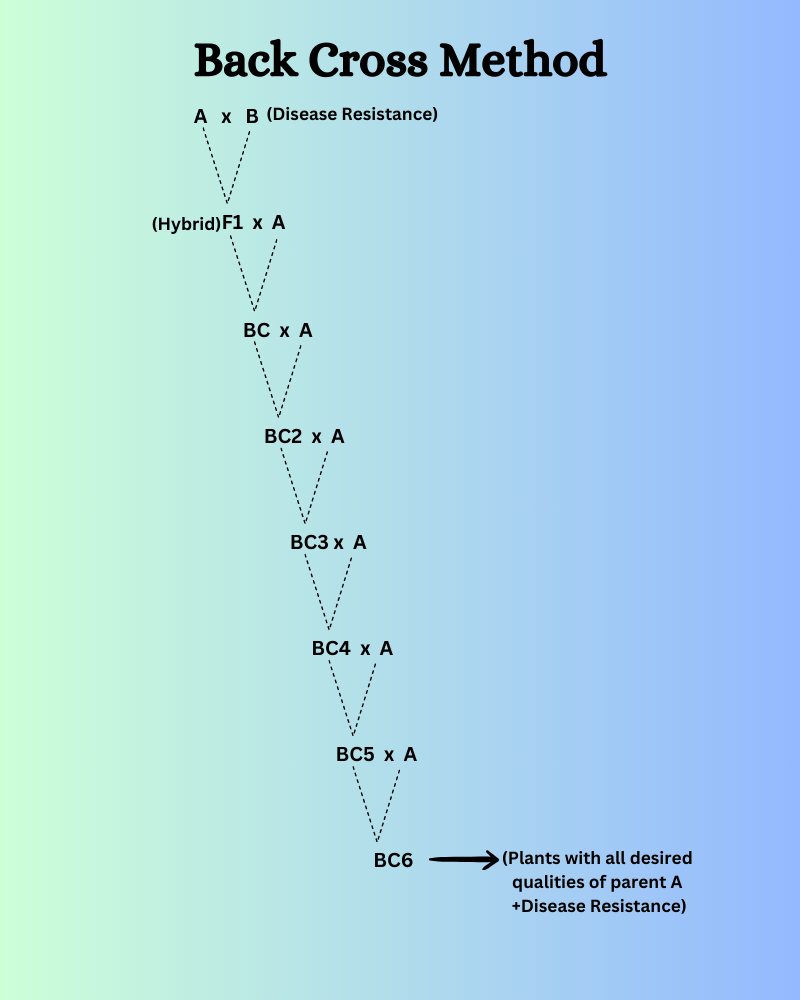
The hybrids of the first back cross are again crossed with A repeatedly for several generations (up to B6) till the desirable character is obtained. The method of back cross is regarded as the best method because,
- The required characteristics of a plant can be brought easily into the desired variety.
- Fertility is established and sterility can be minimized after repeated backcrossing.
Multiple Cross Method
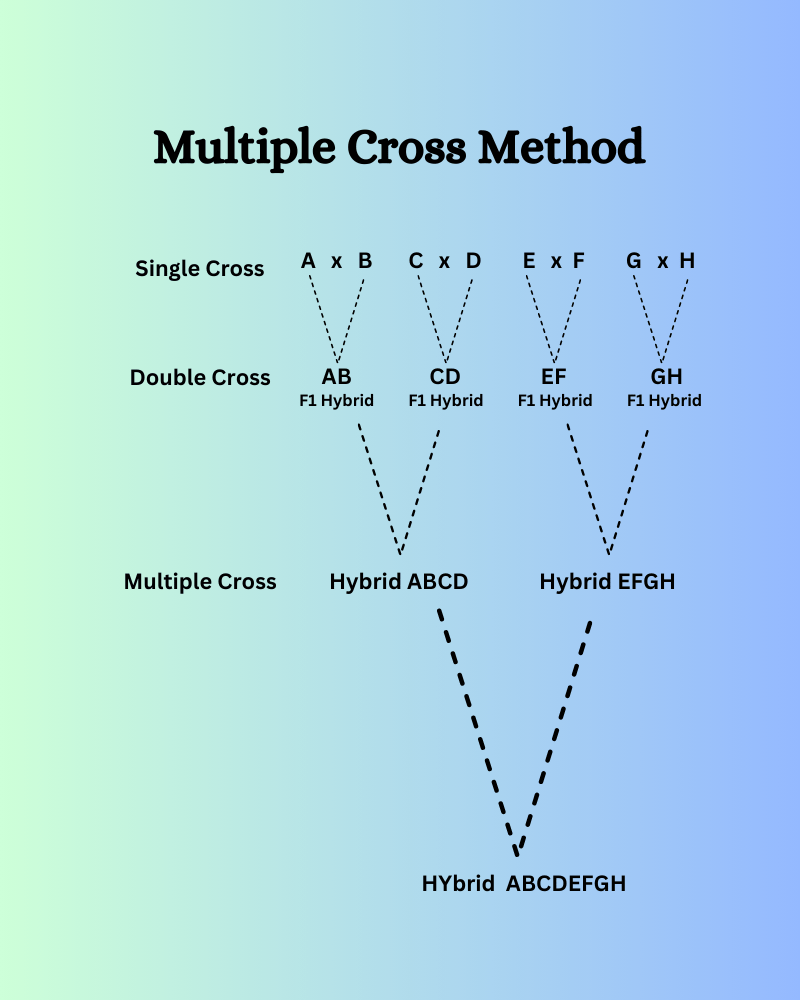
Here, a series of bridge crosses are made, and desirable monogenic characters scattered in many pure line parents are combined in one variety. Suppose there are eight varieties, each with one good quality. Then the qualities of these are combined into one by this method.
Hybridization In Cross Pollinated Crops
In crops like maize, rye, cucumber, fruit trees, etc, the desirable characteristics that are scattered in different pure lines are combined in different ways. These plants reproduce through cross-pollination. There are four types of hybridization in these plants.
- Single Cross where the cross is between the two parents
- Double Cross where the cross is between F1 hybrids of two different single crosses, involving two inbreds.
- Three-way cross is between an F1 hybrid of a single cross and an inbred which is used as a male parent.
- Top Cross is the cross between an inbred and an open-pollinated variety.
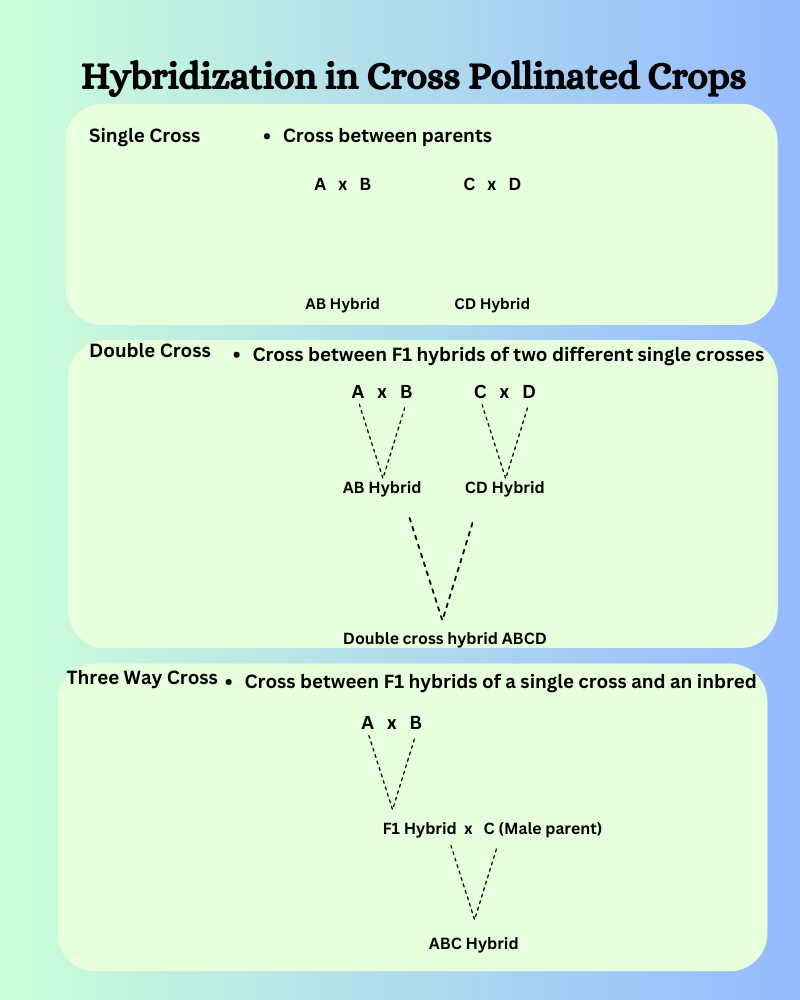
Synthetic Cross has several inbreds combining different desirable characters into one variety.
References
- Procedure of Hybridization.
- Types of Hybridization
- Madankar, Kartik (2020) Plant Hybridization Aims, objectives, and types of hybridization.
